Ogmore Castle | Visit Amazing Welsh Castles
Ogmore Castle is a Norman fortification in the Vale of Glamorgan, South Wales. It stands beside the River Ewenny, close to the village of Ogmore-by-Sea. The castle dates back to the early 12th century and was originally built to secure Norman control over the area.
Today, visitors can explore its stone remains, including a large keep, defensive walls, and a medieval gatehouse. The site is known for its scenic riverside setting and accessible stepping stones.
Quick Facts
Location: Ogmore-by-Sea, Vale of Glamorgan, Wales
Type: Norman stone castle
Built: Early 12th century
Original Purpose: Military defence and administrative centre
Condition: Ruin, with substantial remains
Dog Policy: Dogs allowed on leads
Entry: Free to visit
Access: Small free car park nearby
Setting: River Ewenny, with public stepping stones crossing the river
Managed by: Cadw, the Welsh Government's historic environment service
Brief History
The castle was built shortly after the Norman conquest of Glamorgan in the early 12th century. Its construction is credited to William de Londres, one of the Twelve Knights of Glamorgan. These knights were followers of Robert Fitzhamon, the Norman lord who seized control of the area.
The original structure consisted of earthworks and timber defences. In the late 12th century, these were replaced with stone fortifications. The castle played an important role in securing Norman influence in South Wales during a time of frequent conflict with the native Welsh population.
During the medieval period, it served as both a military stronghold and a manorial centre. It included a courthouse and residential quarters. The castle remained in use until the late Middle Ages but gradually fell into decline after the 16th century.
Today, the ruins are managed by Cadw. They represent one of the better-preserved examples of early Norman castles in South Wales, offering clear views of the defensive layout.
Features and Layout
The castle stands on a low riverside site, protected naturally by the River Ewenny. The main feature is a large stone keep, dating from the late 12th century. It has three storeys, with evidence of domestic rooms on the upper floors. Arrow loops in the walls allowed for defence while providing light inside.
A curtain wall surrounds the castle, forming an inner bailey. Inside this area, you can see remains of buildings such as a hall block and a gatehouse. The gatehouse, though partly ruined, shows typical Norman design with a central passage and defensive towers.
To the north-east, earthworks form an outer bailey. This area was probably used for stabling and storage. Close to the river, there are stepping stones, used historically to cross the Ewenny. Visitors still use these today when water levels allow.
A surviving feature of note is the latrine chute, still visible on the keep’s wall. The worn stone stairs also show how frequently people moved around the castle.
Did You Know?
Ogmore Castle features a medieval courthouse that remained in use into the 19th century, making it one of the few castles in Wales with a documented history of legal use long after its military role ended.
Images
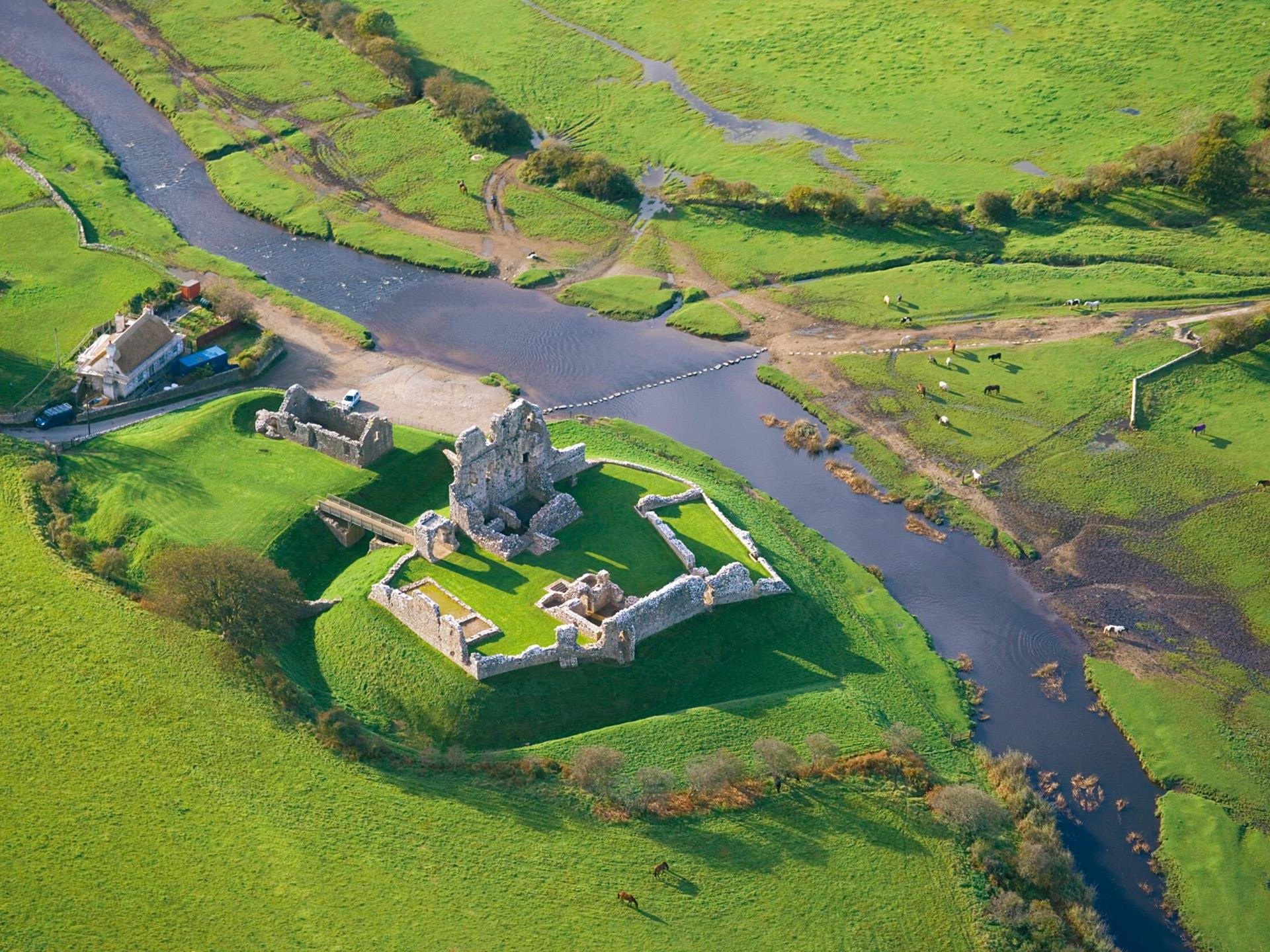
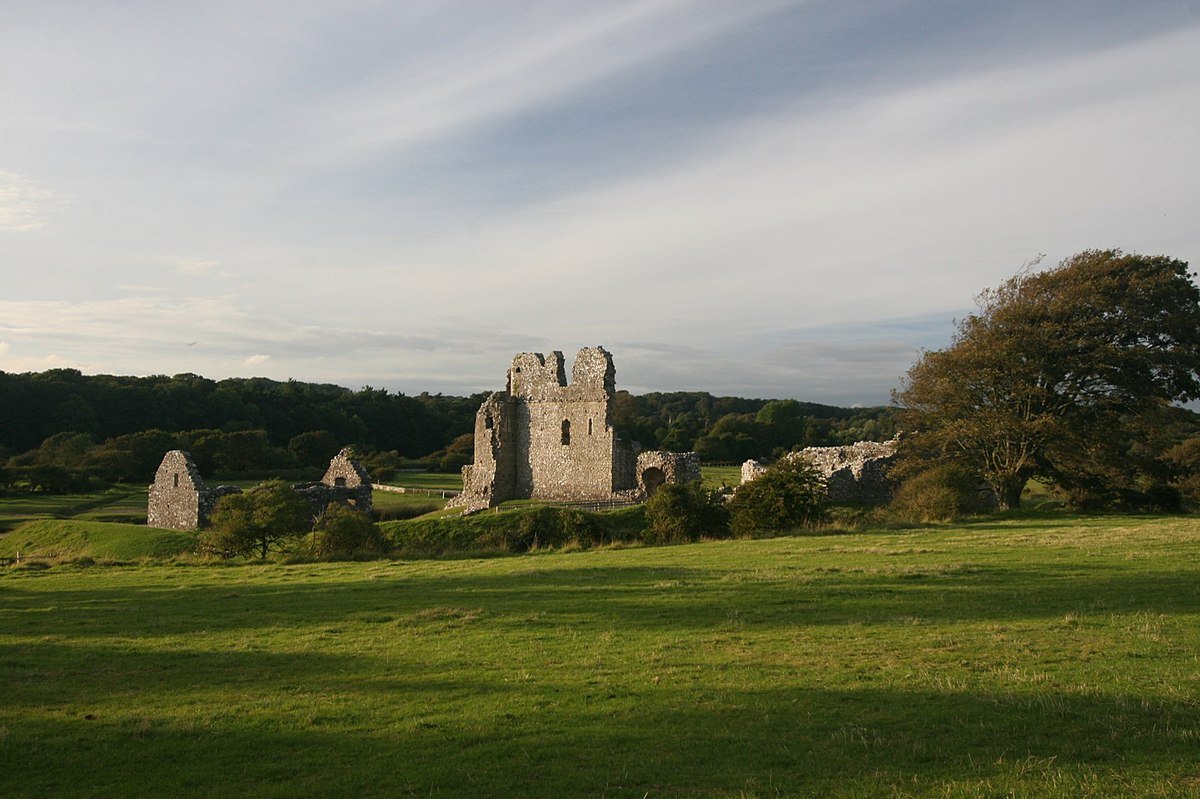

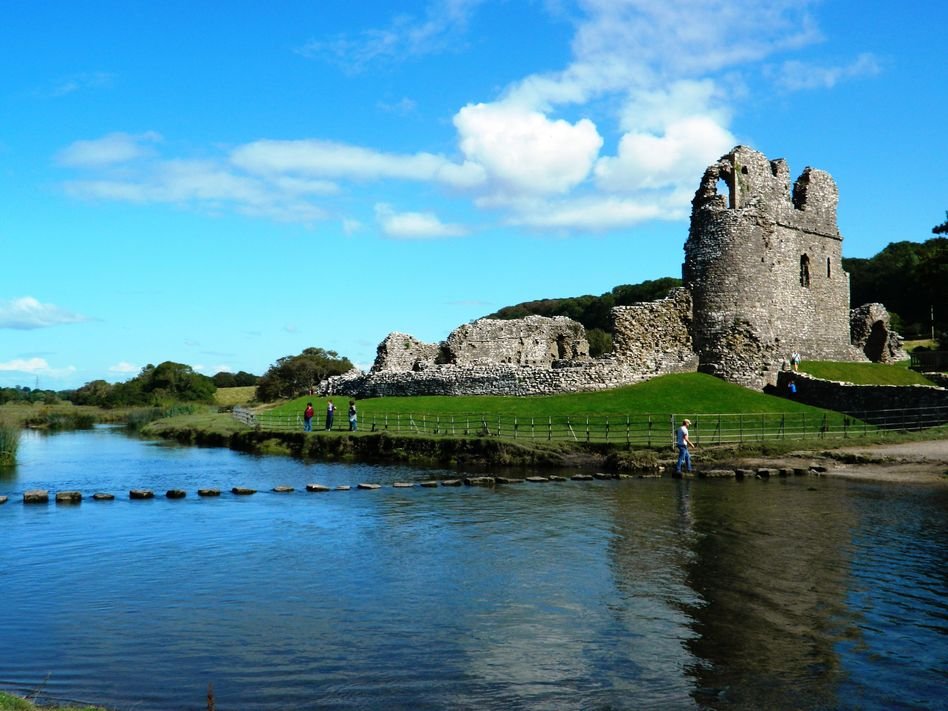
Legends and Stories
This castle has few surviving folk tales, but one popular local story involves the river and the stepping stones. According to village accounts, the stones were laid by Norman builders to ensure safe passage across the Ewenny, especially during raids. Locals say those who slip while crossing are “claimed by the river,” a superstition passed down through generations.
A review on TripAdvisor mentions the site's “peaceful but slightly eerie feel,” especially when walking alone across the stepping stones in misty weather. Some visitors have also described hearing unexplained sounds near the old courthouse area, although no documented hauntings exist.
These stories, while modern in telling, reflect the strong connection between the castle and the local community.
Visiting
The castle is open daily from 10 am to 4 pm (last admission at 3:30 pm), year-round except on 24, 25 and 26 December, and 1 January. Entry is free, and no pre-booking is needed.
Facilities & Access
Car park: small, uneven, space for approximately 20 cars; may flood at times.
Accessibility: The site has uneven surfaces and steps; wheelchair access is difficult.
Dogs: allowed on short leads; they may access ground-floor only. Visitors must control them at all times.
Other: No smoking on-site; drone flying follows Cadw’s policy.
Directions
By car: From Bridgend, take B4265 south to Ewenny, then B4524 west to the castle (postcode CF32 0QP).
By bike: On National Cycle Network Route 88, roughly 1.5 miles away.
Visitor Tip
Bring sturdy footwear to manage uneven terrain and steps. On clear days, the riverside location is ideal for a picnic—but the surrounding ditch may flood at high tide!
Visiting
Opening Times & Entry
Daily, year-round (1 April – 31 March): 10 am–4 pm, with last admission at 3:30 pm.
Closed on 24, 25, 26 December and 1 January.
Entry is free, with no need to pre-book .
Facilities & Accessibility
Car park: Small (approx. 20 spaces), uneven surface, prone to flooding.
Terrain: Uneven ground, steps, limited wheelchair access.
Dogs: Allowed on short leads; restricted to ground-floor areas.
No smoking on-site; drone use subject to Cadw policy.
Directions
By car: Take B4265 south from Bridgend to Ewenny, then B4524 west to CF32 0QP.
By bike: Located near NCN Route 88, about 1.5 miles away.
By bus/train: Nearest bus stop is served by routes 303/404; nearest station is Bridgend (~3.5 miles).
Visitor Tip
Wear sturdy footwear due to uneven terrain. The riverside setting offers a scenic picnic spot, but the ditch can flood at high tide.
Nearby Attractions
It sits within a rich historical and natural landscape. Here are some notable sites to explore nearby:
Ewenny Priory
A Norman-era priory built in the 12th century by the de Londres family. It features cloisters and a medieval church. Located roughly 1 mile from the castle.
Newcastle Castle (Bridgend)
Another early Norman stronghold, just 2.3 miles away. It complements Ogmore as part of the defensive trio in Glamorgan.
Coity Castle
Approximately 3.8 miles from Ogmore, this well-preserved motte-and-bailey castle offers insights into medieval domestic architecture.
Ogmore Stepping Stones and River Ewenny
Adjacent to the castle, this Scheduled Ancient Monument allows visitors to traverse the tidal river—tread carefully during high tides.
Vale of Glamorgan Heritage Coast
Scenic cliffs, dunes, and beaches stretch westward from the castle. Southerndown, Merthyr Mawr, and Newton Burrows lie within walking distance.
Visitor Tips
Wear sturdy footwear for uneven ground and stepping stones.
Check tide times before crossing the stepping stones.
Bring a picnic—riverbanks are perfect for a break.
Visit Ewenny Priory or Newcastle Castle on the same day.
Be mindful: the castle’s small car park may flood after heavy rain.
FAQs
-
Most visitors spend between 30 minutes and 1 hour at Ogmore Castle. You may want to stay longer if you plan to picnic or explore nearby walking routes.
-
Yes, but supervision is necessary. The ruins have steep steps, uneven ground, and an unfenced river nearby. Families often enjoy the open space for play and picnics.
-
No official guided tours are provided at Ogmore Castle. Interpretation panels offer historical information on-site.
-
Drone flying is allowed only with prior permission from Cadw. Recreational drone use is not permitted without consent
-
Access is limited. The terrain includes grass, gravel, and steps, making it challenging for wheelchairs. Visitors with limited mobility may be able to view some areas from the car park.
Wrapping it Up
This castle offers a clear example of early Norman military architecture in South Wales. Its riverside location and preserved features, such as the keep and courthouse, provide valuable insights into medieval life. Visitors can explore the ruins freely, enjoy the natural surroundings, and access nearby historical attractions. The site is easy to visit, with free entry and on-site parking, making it a practical destination for history enthusiasts and casual walkers alike.
Sources
Cadw
Official Cadw page detailing history, opening hours, facilities, and policies.
https://cadw.gov.wales/visit/places-to-visit/ogmore-castleTripAdvisor
Visitor reviews highlighting site atmosphere, activities, and stepping stones.
https://www.tripadvisor.com/Attraction_Review-g3383521-d3456174-Reviews-Ogmore_Castle-Ogmore_by_Sea_Vale_of_Glamorgan_South_Wales_Wales.htmlVale of Glamorgan Council
Overview of the Glamorgan Heritage Coast, including the Ogmore-by-Sea section.
https://www.valeofglamorgan.gov.uk/en/enjoying/Coast-and-Countryside/Heritage-Coast/Glamorgan-Heritage-Coast.aspxVisit Mid Wales
Supplementary details on location, opening times, and contact info.
https://www.visitmidwales.co.uk/showmewales/things-to-do/ogmore-castle-cadw-p1729171See Around Britain
Information on accessibility, parking, transport, and visitor tips.
https://seearoundbritain.com/venues/ogmore-castle-bridgend-free-admission-open-daily


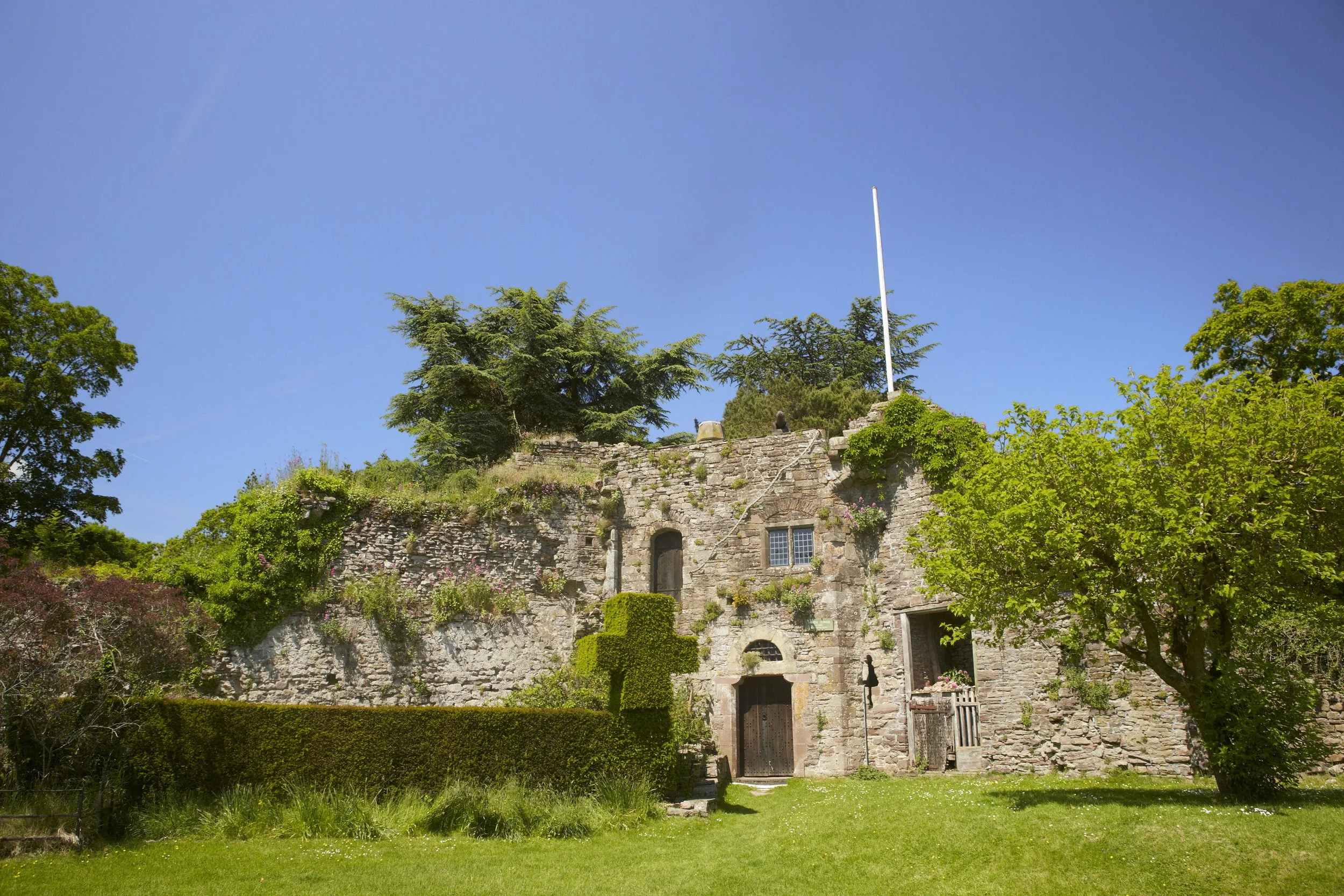
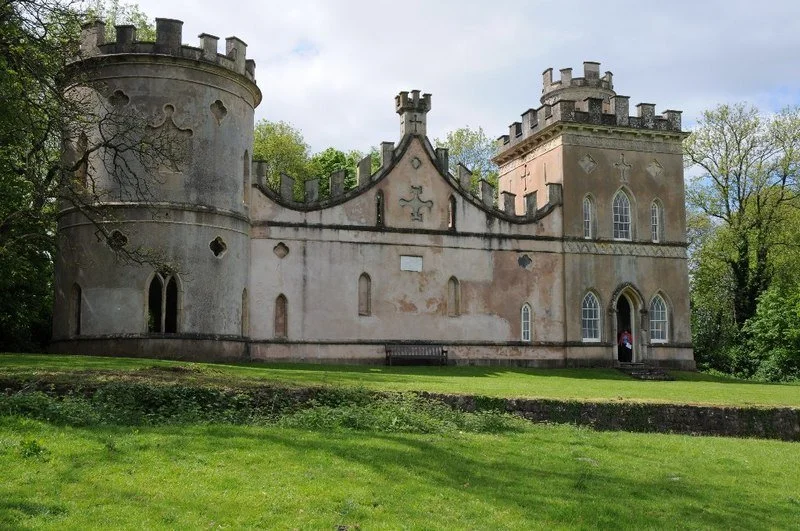
Cardiff Castle is a medieval and Victorian-era site in the centre of Cardiff, the capital of Wales.